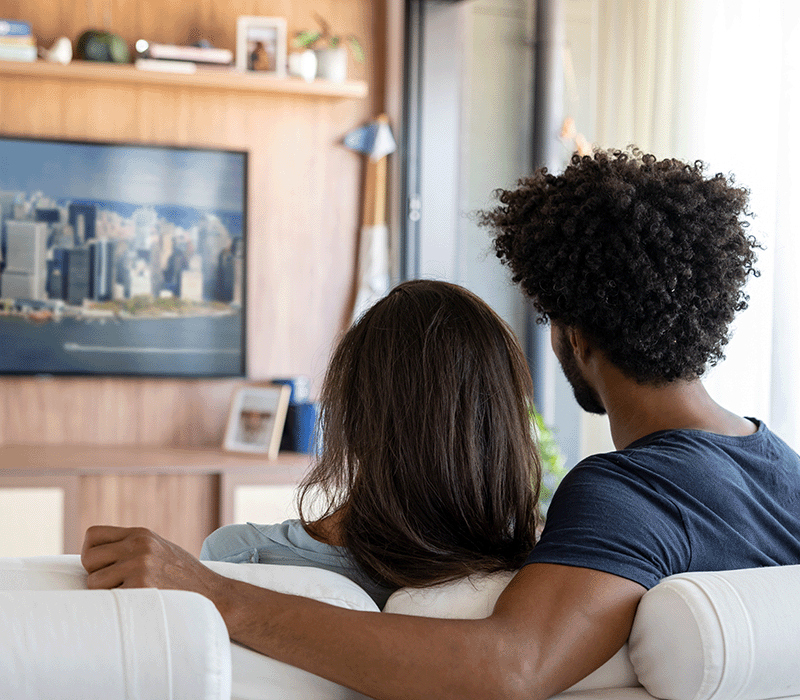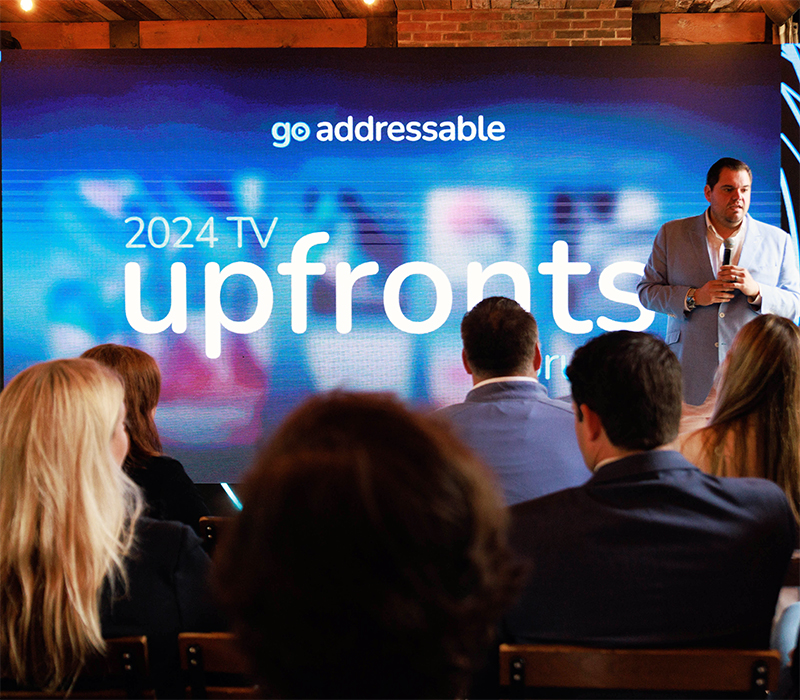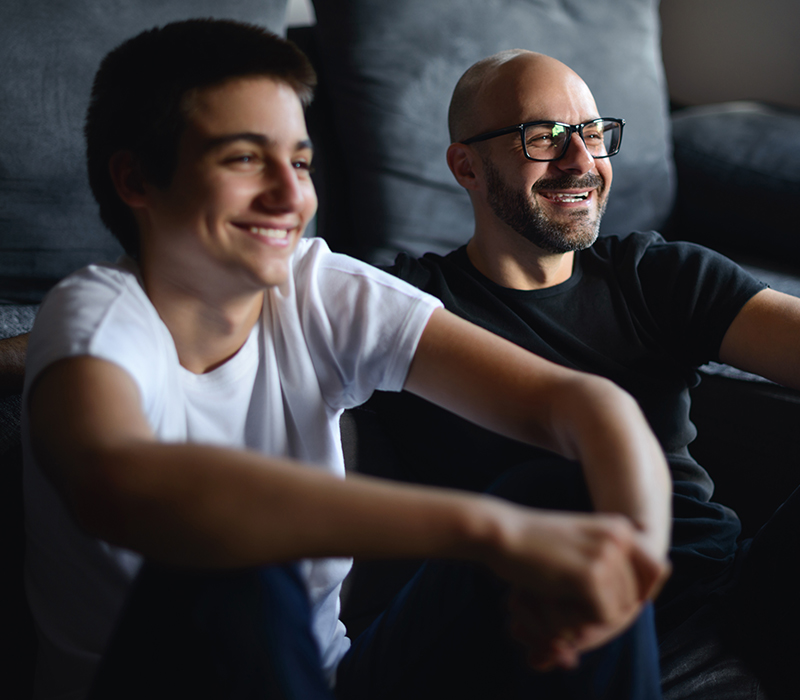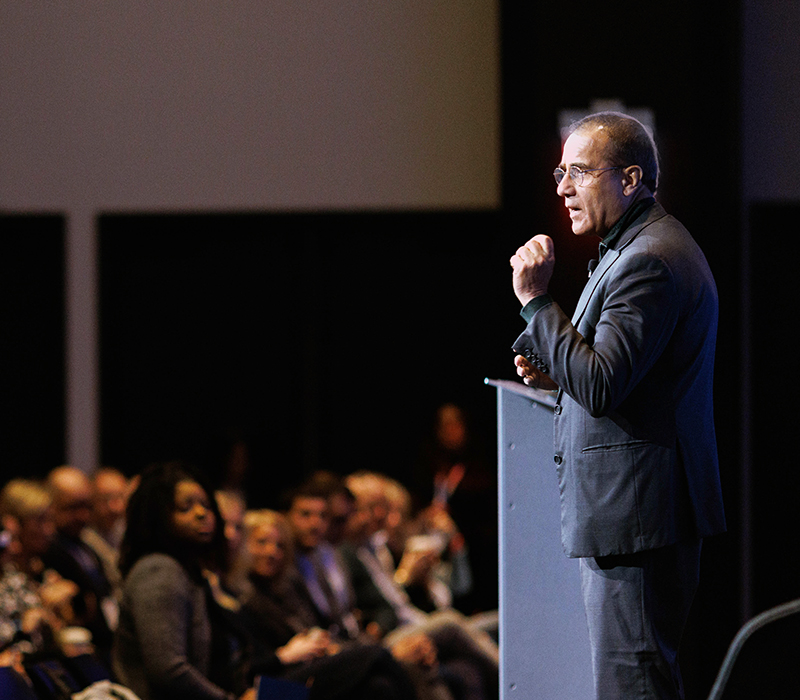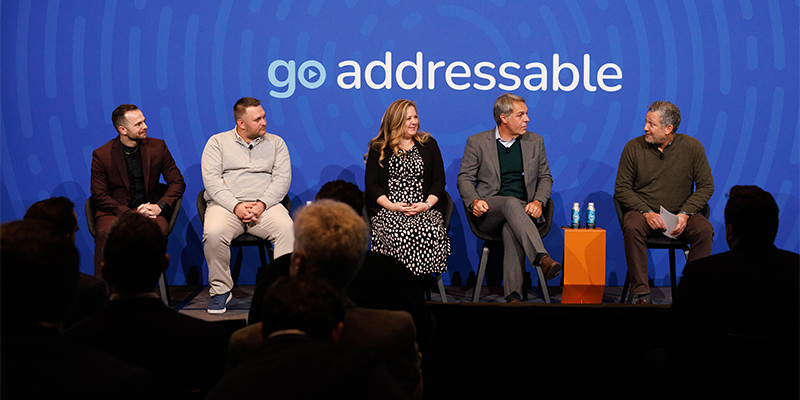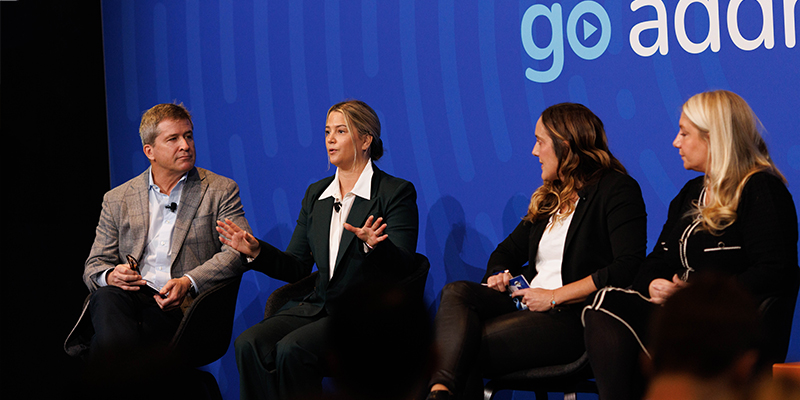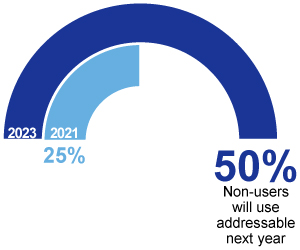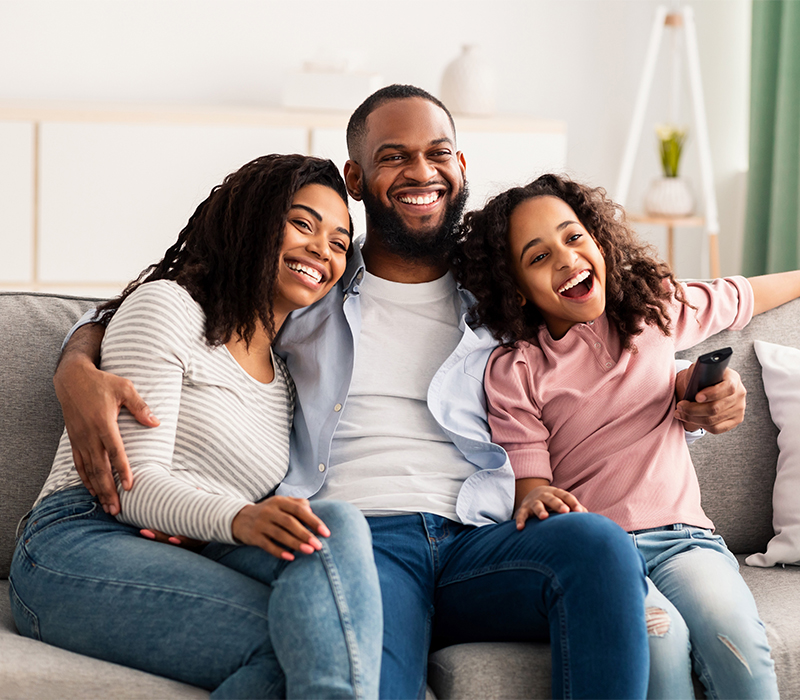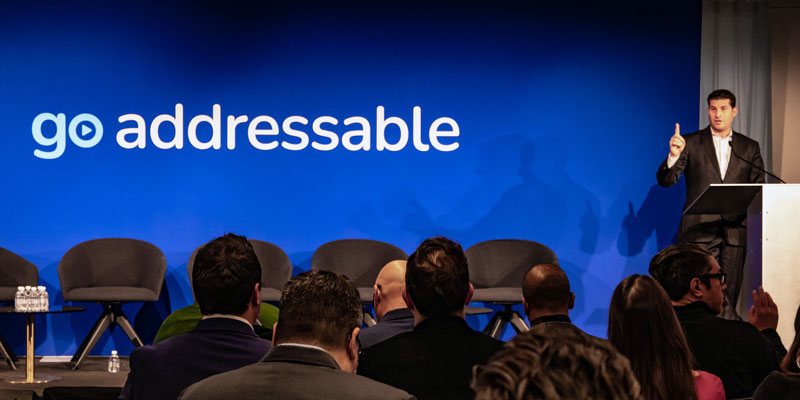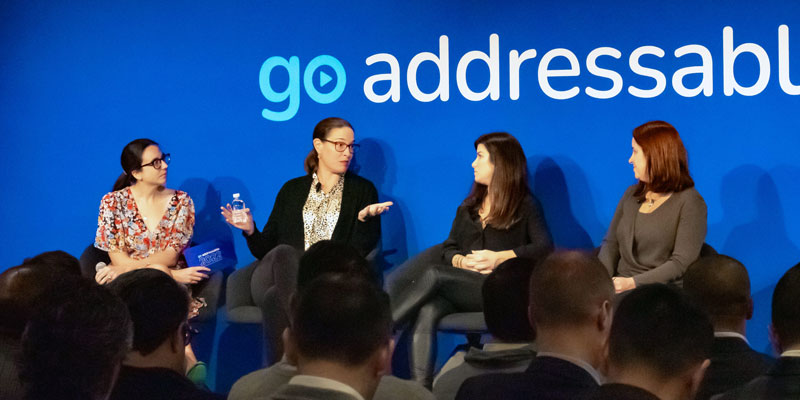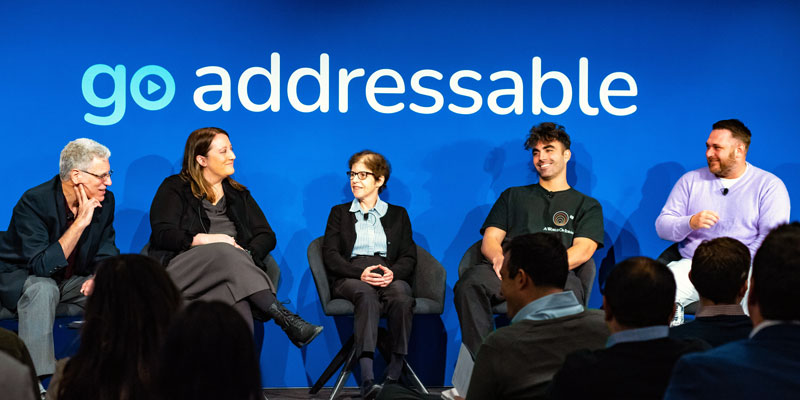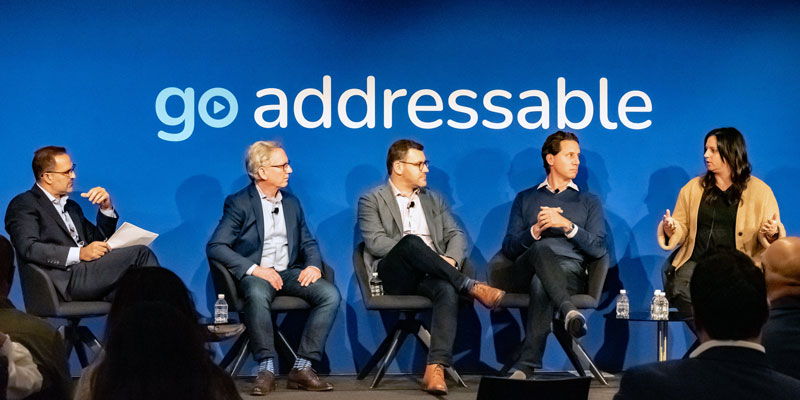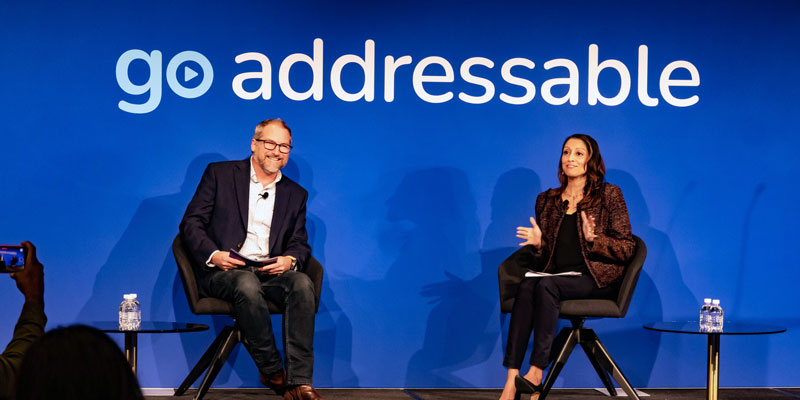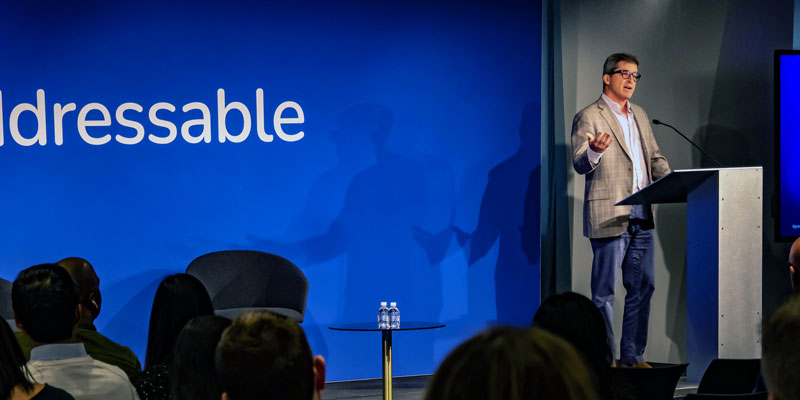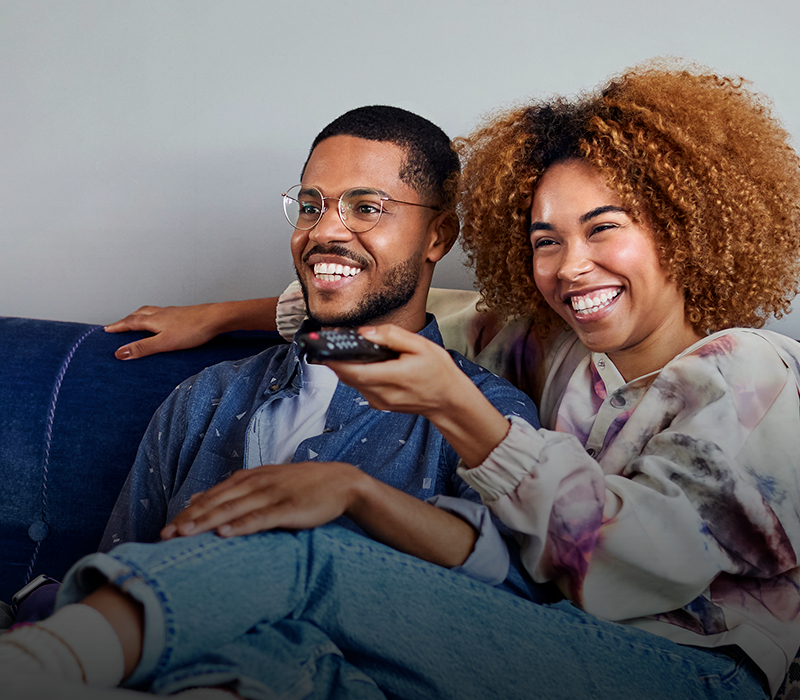
Addressable TV Advertising Has Reached a Tipping Point in 2024
Go Addressable’s annual summit has served as the industry’s pulse check on addressable for the past four years. This year’s event featured leaders from across the industry to discuss the latest trends in addressable TV advertising, including targeting, measurement, and media accountability, as well as the power of premium content, providing insights into how to harness the full potential of audience-based buying and ad innovation in a unified TV ecosystem.
As Larry Allen, VP & GM of Addressable Enablement and Data at Comcast Advertising, mentioned in his opening remarks, it’s a chaotic time in the industry for advertisers. Today’s challenges have resulted in it becoming difficult for advertisers to reach audiences confidently wherever they are watching content. Amidst this, addressable TV has further emerged as a tool that provides stability, scale, and confidence to reach audiences within premium, brand-safe inventory and drive results. In fact, our latest research conducted with Advertiser Perceptions found that addressable TV advertising has grown for the third consecutive year as 53% of advertisers now call it a must-buy. Additionally, two-thirds of advertisers who aren’t currently using addressable plan to start in the year ahead, up 57% from 2022.
Keynote: The Rise of Addressability
With advertisers continuing to seek the most efficient ways to reach audiences on multiscreen TV, addressable TV has become more than just an add-on, but a must-have. As the event’s keynote speaker Sam Bloom, Head of Partnerships at PMG, shared, fragmented media is leading to varied outcomes with many prioritizing cheaper media over more effective tactics like addressable. With so many conflicting narratives out there when it comes to consumer data and audience habits, buyers need to start to reverse engineer the best way to reach audiences, connecting planning and measurement which the use of addressable does. As Sam pointed out, in today’s complex landscape, don’t confuse efficiency with effectiveness; start with the outcomes then work backwards.
Key Insight
It’s more important than ever to be addressable-first.
Addressable in Review:
A Buy-Side Check In
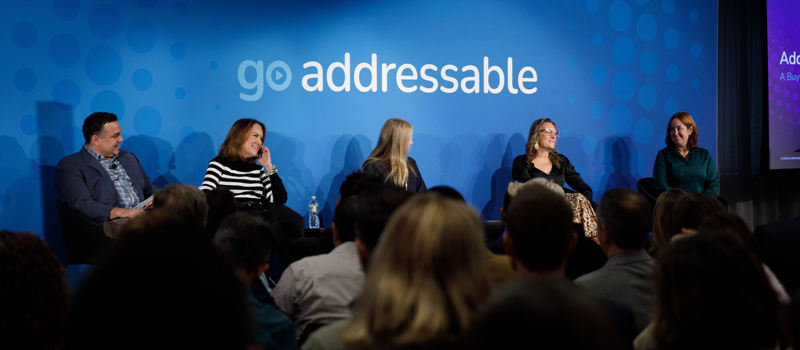
Speakers: Dave Antonelli, DISH Media, Maureen Bosetti, IPG Mediabrands, Lisa Giacosa, Spark Foundry, Cara Lewis, dentsu Media US, Jen Soch, GroupM
The day’s first panel featured chief investment officers from some of the biggest agency holding companies, offering a current state of addressable and looking at how the medium has evolved in the past year. Addressable is in fact at a tipping point, with more buyers including it as part of their media planning.
While all the panelists pointed out that while it’s not always a one size fits all approach to how to include addressable, depending on a client’s goals, as it scales and data improves, more clients are looking to addressable as a more foundational part of their campaigns, taking an addressable-first approach. Across the board, it was echoed how addressable helps advertisers reach their audiences effectively, extend reach, and create more customized connections to drive action.
When discussing how to get clients to allocate more to addressable, the main obstacle everyone noted was getting buyers to understand the true eCPM (effective CPM) of addressable. While many clients believe that addressable is more expensive than digital or streaming CPMs, they need to put it into perspective – not all things are created equal. Addressable CPMs are higher but because they are more effective in reaching precise audiences and avoid a lot of wasted ad spend that comes along when buying other mediums.
One thing is clear: addressable is growing and expanding and advertisers are buying in. As it becomes more complicated to reach audiences, we can expect addressable to become a larger part of the overall media planning process.
Key Insight
Addressable is measurable, actionable, and audience-based.
Identity Crisis: Advancements in Identity and Measurement
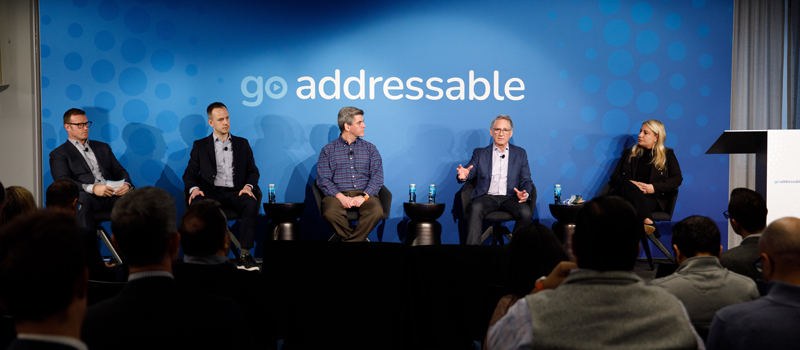
Speakers: David Algranati, Comscore, Dan Callahan, Spectrum Reach, Brett Hurwitz, Yahoo DSP, Jason Manningham, Blockgraph, Andrea Remoundos, GroupM
As signal loss remains a concern, the panelists pointed out how reliable identity data for accurate targeting, reach, and attribution is more important than ever. A campaign is only as good as the data it’s built on: The ability to match audiences accurately will ultimately impact a campaign’s success. If advertisers are making decisions based on inaccurate data, it can cost them their budget, which is commonplace in channels like digital where targeting imprecision can result in wasted impressions and spend.
Addressable on the other hand can reach audiences with precision since it is underpinned by a durable household (HH) ID. Further, having that HH ID associated with an ad view means that addressable can provide return path data to understand who saw an ad and converted in the same household. This means addressable allows advertisers to accurately tie attribution outcomes to ad exposures.
While the panel voiced that there will never be just one sole solution or standard when it comes to identity, they do believe that there will be a small number of identity frameworks that can work together, fueled by a universal, consistent HH identifier. It is important to use a consistent identity framework throughout the campaign process (planning, activation and measurement) to understand effectiveness of the audience and media.
For addressable to continue to grow in the year ahead, advertisers will need to continue to experiment and test and learn.
Key Insight
Addressable harnesses reliable and durable identity data to deliver precision targeting and provide accurate measurement and attribution.
Maximum Impact: Evangelizing the Value of Long-Form, Premium Content

Speakers: Cullen Deady, Publicis Media, Sara Grimaldi, Paramount, Eric Haggstrom, Advertiser Perceptions, Matt Van Houten, Go Addressable, and DIRECTV Advertising
While advertisers may have a more defined view of what they consider premium or not, for consumers premium is personal and every viewer may have their own definition depending on what they care about. Although, one thing that advertisers and consumers alike can agree on is that when it comes to premium, it typically means an engaged, lean-in experience.
For the most part though, these premium experiences take place on the biggest screen in the home: TV, whether it’s traditional or streaming. Across the board it was shared how addressable TV advertising allows advertisers to activate premium inventory and reach audiences in brand-safe environments. Additionally, because addressable relies on authenticated audience data, advertisers can harness it to deliver relevant ad experiences to consumers. This means ad relevancy – not only in terms of the creative – but also the frequency of messaging since addressable can help solve for frequency cap issues. Using data, advertisers can deliver relevant, non-disruptive ad experiences in premium content to provide a better viewer experience and positively impact brand sentiment and conversions.
Key Insight
Addressable allows advertisers to deliver relevant ad experiences in premium, brand-safe environment – without overexposure to their ads.
What’s Next for 2025
This year’s summit further demonstrated that addressable is no longer an add-on but a must-buy. During the fireside chat Erin Echter, Director of Marketing, Genentech Vabysmo, shared, as a pharma brand TV will always be a mainstay – but as audiences and viewing habits shift, it’s essential that their brand innovates to ensure they can reach all audiences wherever they are; and addressable allows them to do this effectively and efficiently. Adam Arnegger, Managing Partner, Executive Investment Director at Wavemaker added: For their clients, getting reach and cutting waste is a priority and addressable helps achieve both, while enabling them to effectively measure and optimize. For these reasons, we’re seeing addressable on nearly all of the media plans for pharma clients in 2025.
As Evan Adlman, EVP Commercial Sales & Revenue Operations AMC Networks, said in his closing remarks; buying audiences is something that advertisers have always done. But this has traditionally focused on age and gender. Now with addressable – we have the tools to do deeper targeting across channels, with better measurement that can tie ad exposures to outcomes.
The key to continuing addressable’s growth and expansion is more education. As pointed out by many of the speakers, addressable’s eCPMs are much more efficient than linear or digital CPMs since they ensure a campaign effectively reaches its target audience without wasting impressions or budget.
Thank you to all that joined us for Go Addressable Summit 2024: The Intersection of Addressability and Innovation. Your participation and collaboration help us educate the industry and push the medium forward. To keep up to date with all the latest work we are doing, visit Insights – Go Addressable.
To watch the full replay of the event, or check out the highlights here.






